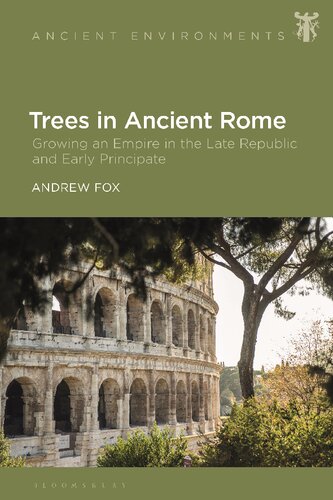Product desciption
Trees In Ancient Rome Growing An Empire In The Late Republic And Early Principate Ancient Environments Andrew Fox by Andrew Fox 9781350237803, 9781350237834 instant download after payment.
Focusing on the transitional period of the late Republic to the early Principate, Trees in Ancient Rome offers a sustained examination of the deployment of trees in the ancient city, exploring not only the practicalities of their cultivation, but also their symbolic value. The Ruminal fig tree sheltered the she-wolf as she nursed Romulus and Remus and year’s later Rome was founded between two groves. As the city grew, neighbourhoods bore the names of groves and hills were known by the trees which grew atop them. From the 1st century BCE, triumphs included trees among their spoils and Rome’s green cityscape grew, as did the challenges of finding room for trees within the congested city.
This volume begins with an examination of the role of trees as repositories of human memory, lasting for several generations. It goes on to untangle the import of trees, and their role in the triumphal procession, before closing with a discussion of how trees could be grown in Rome’s urban spaces. Drawing on a combination of literary, visual and archaeological sources, it reveals the rich variety of trees in evidence, and explores how they impacted, and were used to impact, life in the ancient city.
Taking his starting point as the tree that sheltered Romulus and Remus, Andrew Fox develops our understanding of the impact that Rome’s trees had on the cityscape, and explores them as features of architecture and spoils of war. Certain trees, he argues, function as sites of memory, communicating ideas of conquest and empire, while others are planted to direct the use of a space. Fox follows Rome’s integration of new trees into the cityscape, beginning with the place of remembered trees in the city, before moving to Pliny the Elder’s rationalisation for bringing new trees to Rome, and their role in the triumphal context, where trees had been displayed since Pompey the Great. Finally, he finishes with a chapter examining the physical integration of trees in the city, and how they could impact key sites. Fox’s aim is to demonstrate that the trees of ancient Rome were vital components in the city’s layout and its architecture, and though archaeologically fugitive, they should be included in understanding how Romans interacted with the world around them.


